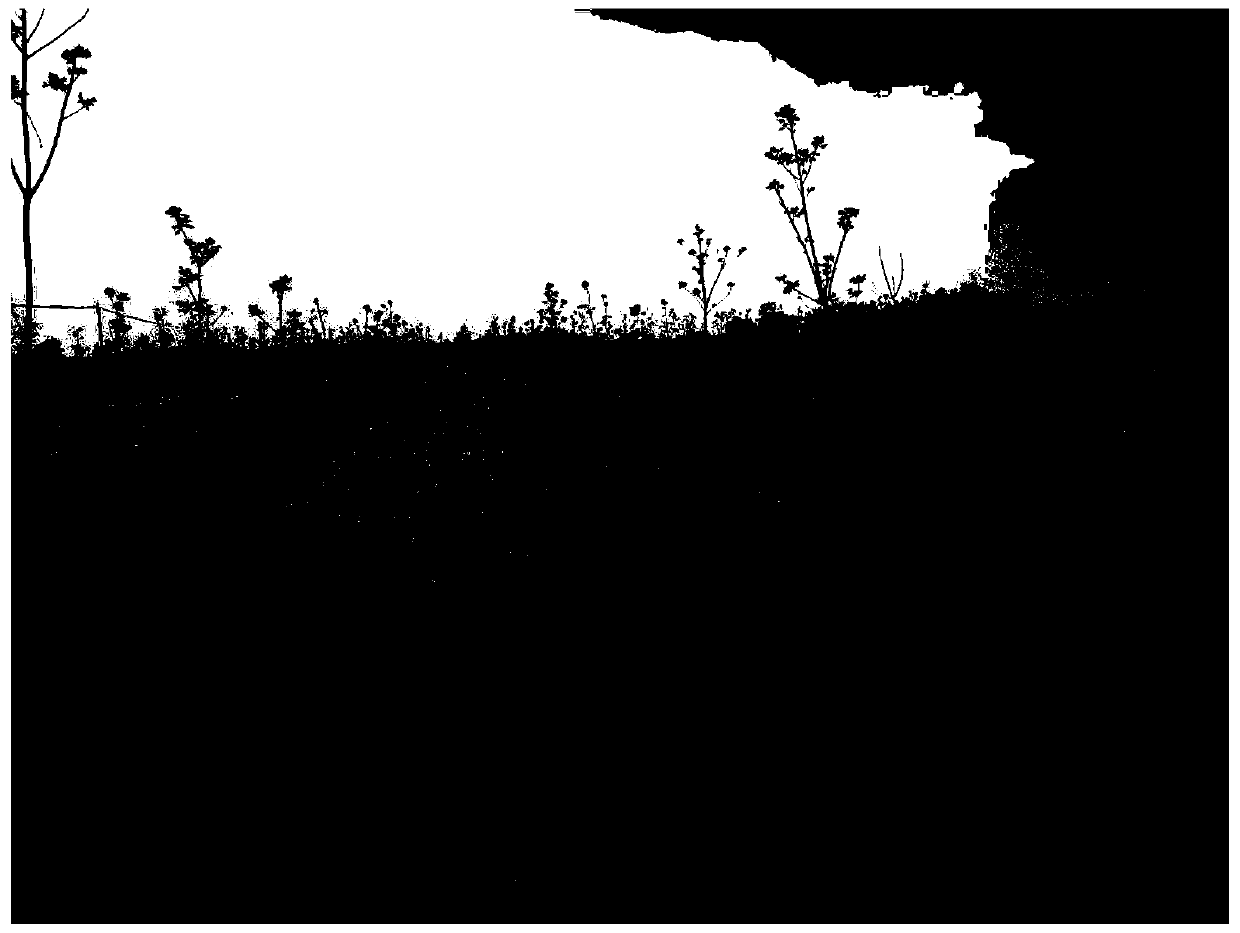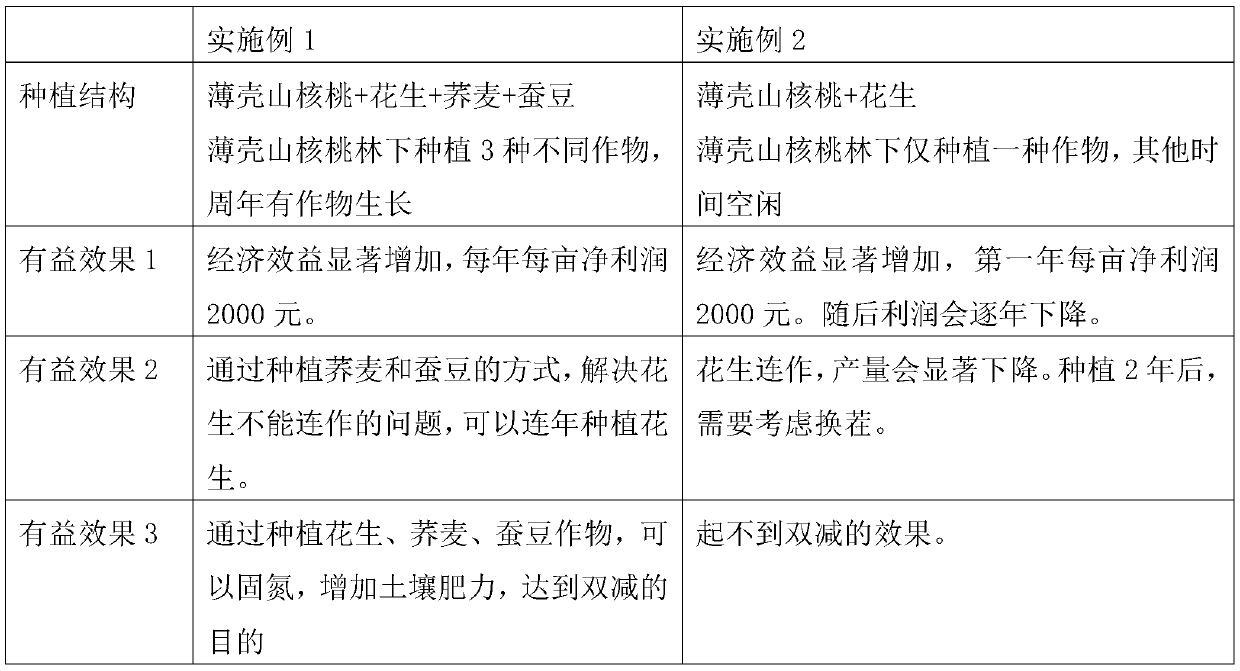Sustainable development planting method based on carya illinoinensis
A thin-shell pecan and planting method technology, applied in the field of economic crop cultivation, can solve the problems that peanuts cannot be continuously cropped and affect peanut production, and achieve the effects of reducing the use of chemical fertilizers and pesticides, increasing farmers' income, and promoting growth
- Summary
- Abstract
- Description
- Claims
- Application Information
AI Technical Summary
Problems solved by technology
Method used
Image
Examples
Embodiment 1
[0027] A sustainable planting model based on shelled hickory:
[0028] 1) Field selection: flat land
[0029] 2) Soil improvement: Evenly spread about 5 tons of decomposed organic fertilizer per mu of land, including cow manure, sheep manure, etc., and plow the ground 30cm deep with a tractor.
[0030] 3) Thin-shelled hickory planting: After the thin-shelled hickory leaves fall in autumn, use an excavator to dig a planting hole with a length of 1.5 meters in depth and a width of 1.5 meters, and spread 50 cm of decomposed organic fertilizer in the planting hole, including cow dung, pig manure, sheep dung, etc. manure, etc., and then backfill the surface soil into the planting hole, and the deep soil is backfilled into the planting hole after being frozen for more than 30 days, and the backfilling soil is parallel to the original ground. Select fine varieties of pecans with thin shells for planting, and the number of varieties is not less than 3. Select grafted seedlings of ex...
Embodiment 2
[0036] The planting mode of intercropping peanut under the embodiment 2 thin-shell hickory nuts
[0037] 1) Field selection: flat land;
[0038] 2) Soil improvement: Evenly spread about 5 tons of decomposed organic fertilizer per mu of land, including cow manure, sheep manure, etc., and plow the ground 30cm deep with a tractor.
[0039]3) Thin-shell hickory planting: After the thin-shell hickory leaves fall in autumn, use an excavator to dig a planting hole with a length of 1.5 meters in depth and a width of 1.5 meters, and spread 50 cm of decomposed organic fertilizer in the planting hole, including cow dung, pig manure, sheep dung, etc. manure, etc., and then backfill the surface soil into the planting hole, and the deep soil is backfilled into the planting hole after being frozen for more than 30 days, and the backfilling soil is parallel to the original ground. Select fine varieties of pecans with thin shells for planting, and the number of varieties is not less than 3. ...
PUM
 Login to View More
Login to View More Abstract
Description
Claims
Application Information
 Login to View More
Login to View More - R&D
- Intellectual Property
- Life Sciences
- Materials
- Tech Scout
- Unparalleled Data Quality
- Higher Quality Content
- 60% Fewer Hallucinations
Browse by: Latest US Patents, China's latest patents, Technical Efficacy Thesaurus, Application Domain, Technology Topic, Popular Technical Reports.
© 2025 PatSnap. All rights reserved.Legal|Privacy policy|Modern Slavery Act Transparency Statement|Sitemap|About US| Contact US: help@patsnap.com


